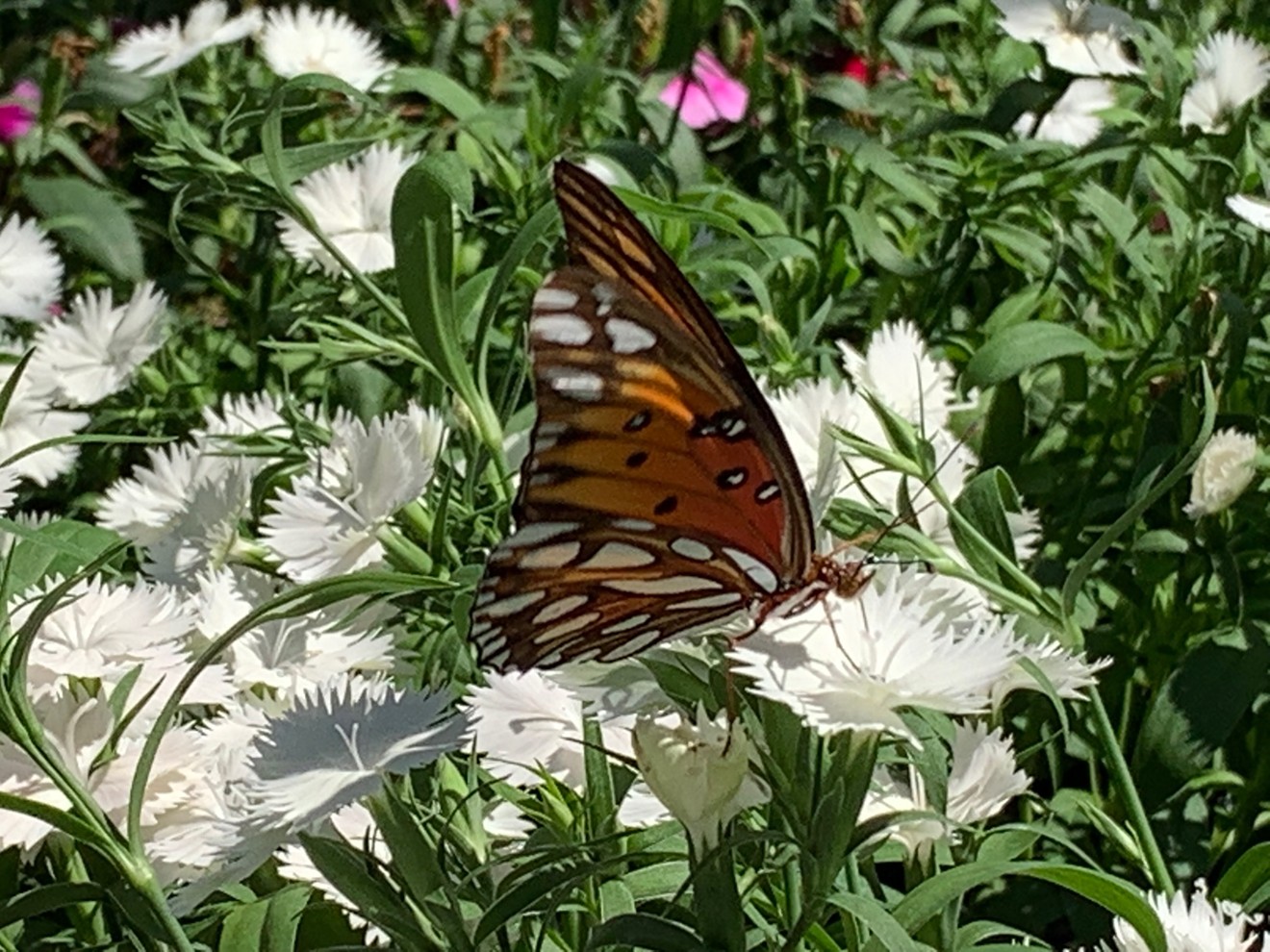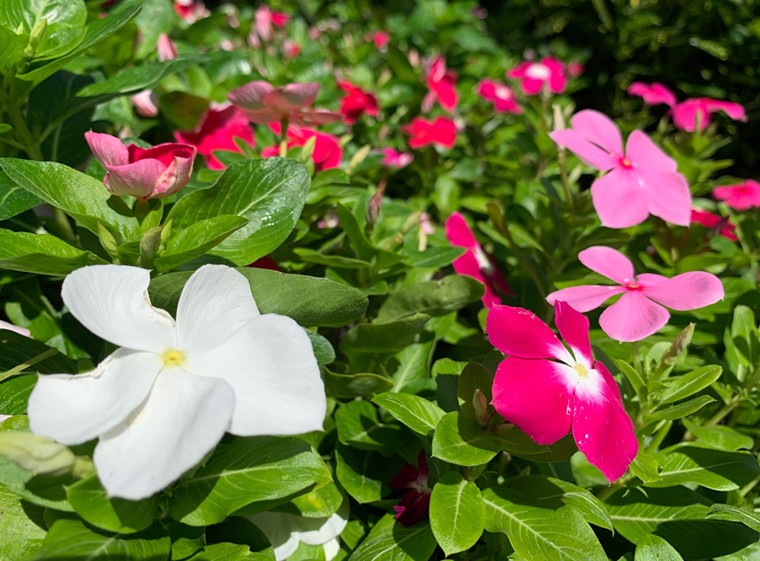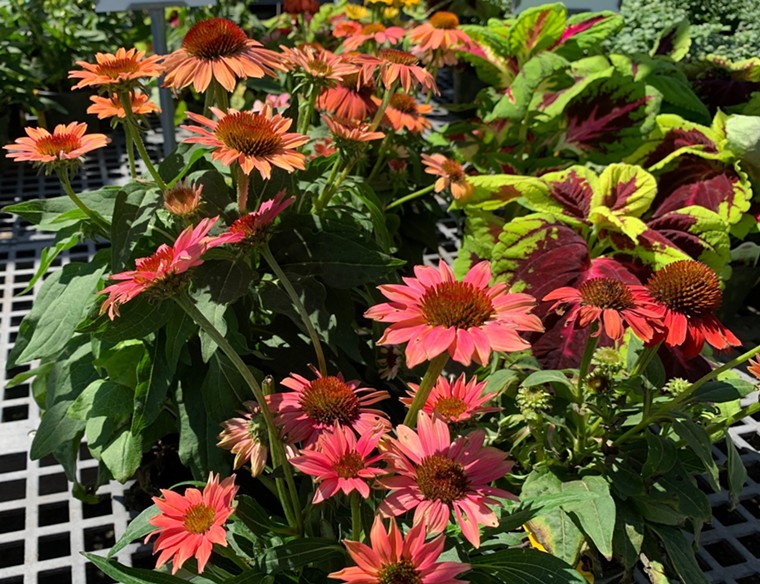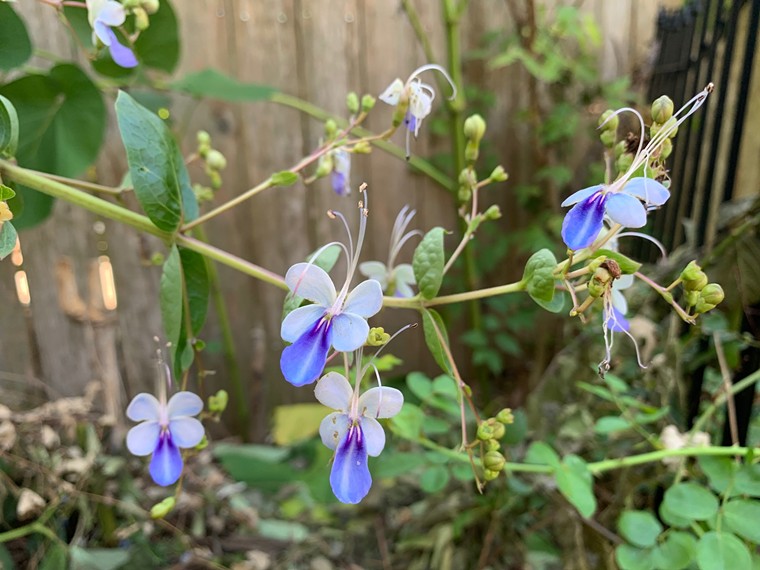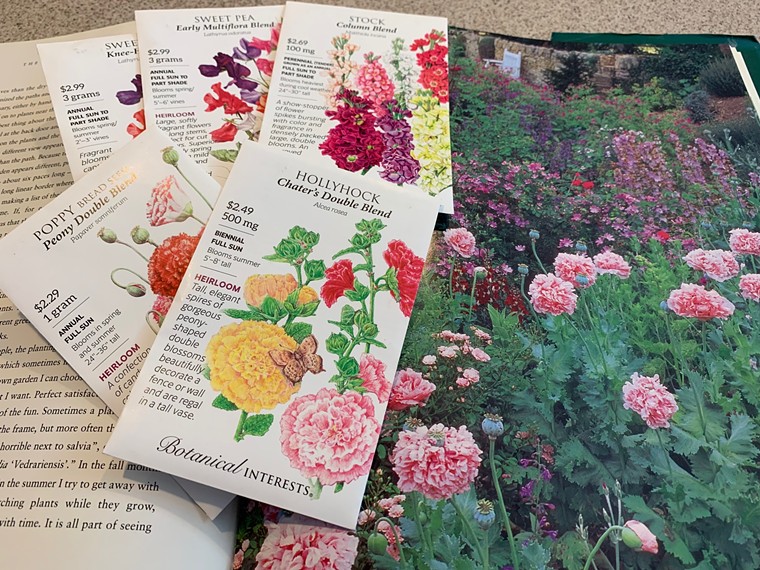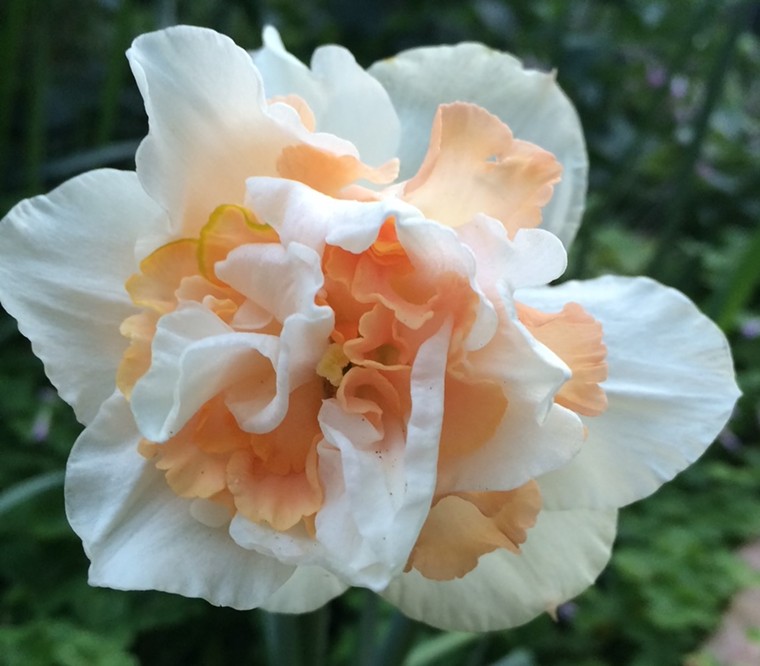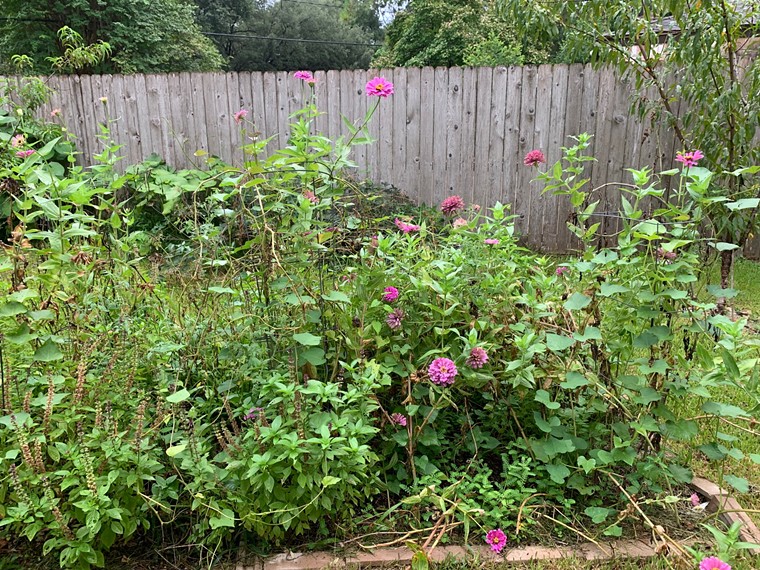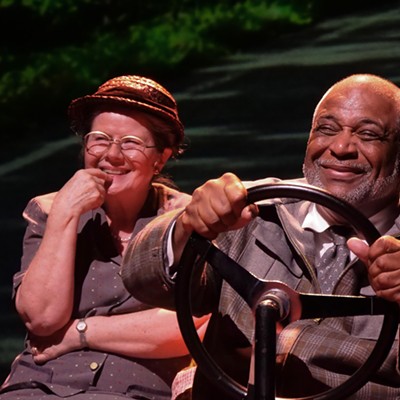This week, the morning lows were under 60 degrees in the Greater Houston area. Houstonians took their dogs out for walks, drank margaritas on the patio and rushed to the coffee shops for their pumpkin-spiced beverages, barely breaking a sweat. Every year, we wait for the first taste of autumn and every year, we collectively sigh a breath of relief as we look forward to enjoying the outdoors again.
For Houston gardeners however, this is not the time to lollygag. There's work to be done and the cool mornings and evenings are the best time to do it. With no rain predicted this week (except for the poor souls in Florida), this is a great time to head to the garden center and load up on soil amendments, mulch and all the pretty flowers our hearts desire. So grab a partner or one of your unwilling teen children and enlist them in the heavy work. They need to get away from their screens, anyhow.
While much of the nation is putting their gardens to bed at this time of year, Houstonians are watching their lawns and landscapes come back to life. The drought and heat have done some damage to our flora and foliage. Now is the time for homeowners and les jardiniers to make a plan for not only the fall garden, but the spring one as well.
The nurseries are already bursting with mums, but for most people, chrysanthemums are a decoration rather than a purposeful planting. They decorate mailbox planters or sandwich door fronts with their fall colors of burnt oranges, deep scarlets, pretty purples and cheery yellows. For those who love the mums, they must be regularly deadheaded for prolonged blooming. A mum can look beautiful one week and sad the next. With our warm autumns, it's best to make sure they aren't in the sun at the hottest parts of the day. Once they are past their peak, they can be planted in the garden. We recommend finding an area of the flower bed where they can do their own thing. I personally have a purple variety and a white variety that I planted from pots over ten years ago. They have spread like crazy but I can cut them back if they get too invasive and they surprise me every year with a fall and a spring bloom when other plants aren't doing much.
Garden centers and big box stores usually know what grows best in the region so Houston gardeners will find vincas (periwinkles), petunias, dianthus, pentas and snapdragons right now, soon followed by pansies and violas as the weather cools. These are planted as annuals but vinca and penta can survive through the year and often self sow or come back from the roots. Petunias are sometimes reliable for returning from seed or roots and dianthus can also weather our winters unless we get an unprecedented freeze as we did in 2021. My personal experience with pansies has been one of disappointment. They look nice in the late fall and much of the winter but they rarely survive more than a season. As a thrifty person, plants that last as long as possible are my favorites.
One of those favorites is Gerbera daisies. The double florist types are the ones most of us are familiar with and they are always eye-catching. However, they don't do as well in our Houston gardens as the single Gerbera. I have a couple in my mailbox planter that have been there for over a decade and they bloom throughout the year. Even though they are in a very sunny area, they get some relief from the brick mailbox itself as the sun moves throughout the day. Gerbera love sun, but not high heat, so it's a bit tricky finding a spot for them. Morning sun and dappled afternoon shade will usually keep these perennials happy. On the front side, they are more expensive than other annual because they are sold in larger pots. The plus is that they can last for years.
Another perennial that can be planted in fall is echinacea, or purple coneflower. I will confess that they have never been perennial for me, but the new colors that go beyond pink and purple are tempting me to try my luck again with the plants.
This is also the time to plant shrubs, roses and trees. The relatively cooler weather allows them to establish their roots before the winter. A northern gardener would never think of planting such expensive items right now, but for we Southerners, it's prime time for doing so. Unfortunately, the inventory can be limited as many garden centers are still trying to sell off their summer stock. Frugal gardeners will find good deals and cut-rate prices but the plants have usually suffered from the heat over time. If the price is right, though, it's worth a challenge.
Plumbago is an easy and ubiquitous Houston plant that can grow shrub size. It tolerates heat and drought but will die back in extreme freezes. It almost always comes back, however, and it is a stalwart in any butterfly garden or front flower bed. An exotic plant for our area is the Blue Butterfly Bush or Blue Glory Bower. Not to be confused with the butterfly bush (buddleia davidii), the Blue Butterfly Bush (clerodendrum ugandese) has unique flowers that look like little butterflies. It's up there with lantana, though, for the stink factor. Lantana is another plant that grows into a massive shrub and must be cut back throughout the year. Still, it's worth growing for the butterflies, bees and hummingbirds. And its blooms make great bridal bouquets for Barbie dolls.
Many homeowners and residents want instant gratification when it comes to flowers but there are months ahead where patience is warranted. Many plants that we see in English cottage gardens can be sown from seed now throughout October and November so that they bloom in the earliest months of spring here in Houston. I know proponents of native plants aren't too happy with that idea, but this Anglophile cannot resist sowing seeds of larkspur, stock, hollyhock, poppies and ornamental sweet peas. They each have different bloom times and needs. Hollyhocks are usually biennial so they rarely bloom the first year after sowing. Fragrant sweet peas need cooler weather and usually something to climb. They are sometimes a mixed bag for me but when I am successful with them, I sit with a cup of tea and my semi-Labradors and fancy that I am famed English gardener Gertrude Jekyll admiring my handiwork.
The easiest of the cottage garden seeds to sow in fall is larkspur. They are a wonderful stand-in for delphiniums which do not do well in Houston gardens. They aren't quite as showy but they are pretty reliable and will often self-sow for next spring. They come in an array of pastel colors.
Then, there are bulbs. Here's where gardeners can drop a pretty penny, especially on tulips. Though they aren't as expensive as in the seventeenth century days of "tulip mania", they still can cost from 75 cents to nearly two dollars a bulb. When flipping through a catalog of gorgeous tulips, one understands the craze. I usually buy bags of tulip bulbs at the garden stores and put them in a dedicated vegetable drawer in the refrigerator for 6 to 8 weeks, with no produce, especially apples which produce ethylene gas that will cause the tulips to rot. I try to get tulip bulbs in the ground by mid-December and I pick a cool day. There are bulb boosters that will give them an extra bit of nutrients but I haven't seen a difference in my tulips either way. I haven't used chemical fertilizers in years so gardeners can save a few bucks by just avoiding them. Some folks use a little bone meal to give a boost but if you have pets, as I do, they might go on a digging frenzy. I have had that happen with manure applications as well. Dogs like stink.
Other bulbs that should go in the ground in November and early December are daffodils and freesia plus tubers like ranunculus and anemones. Unfortunately, freesia can sometimes fall victim to our late winter freezes but they are still one of my favorite bulbs because of their beauty and their fragrance. Daffodils come in so many varieties that it's hard to choose. I am drawn to the apricot colors but every flower bed looks cheerful with big, bright yellow varieties.
Both tulips and daffodils are usually listed as early, mid and late blooming so smart gardeners will plant some of each for a continual show of color. Tulips do not naturalize here, so they are an expensive, but showy, annual. Some daffodil varieties will naturalize but they aren't always dependable when it comes to reblooming.
Another important gardening chore is cleaning. My front flower beds were embarrassingly overgrown by the end of summer. I am slowly making progress on the weeding and in the process, discovering that there are plants coming back from the heat and drought. Once the weeding is done, mulch can be laid down. Then, the mulch can be pulled back in places where seeds are sown and bulbs are planted.
As for fertilizing, most ornamental plants do not need it in the fall. It will only cause new growth that will be susceptible to any frost we get in the winter. I am not an expert in lawn care but any fertilization should have been done in September. Personally, I don't ever fertilize my lawn and it's just as green as my neighbors, though that could be the weeds. Biodiversity is healthy.

This Angel's Trumpet has survived droughts, heat and freezes for eight years, always coming back from the roots.
Photo by Lorretta Ruggiero
The cooler weather is the perfect time to get our hands dirty and plant the ornamentals that make us happy and give our homes curb appeal. And many of the flowers we plant now will be a last hurrah for the butterflies, bees and hummingbirds that are currently hanging around our homes. Autumn is in the air and we are so ready for it.
Here are a few local nursery centers, events and resources for fall gardening ideas and plants:
Another Place in Time
421 W. 11th
anotherplaceintime.com
The Arbor Gate
15635 FM 2920
arborgate.com
Buchanan's Native Plants
611 E. 11th
buchanansplants.com
Cornelius Nurseries
Four Greater Houston locations and Galveston
calloways.com/cornelius/
Houston Garden Centers
Multiple locations
houstongardencenters.com
Plants for All Seasons
6610 Louetta
21328 Texas-249
planstforallseasons.com
Events:
Buchanan's Fall Festival, 611 E. 11th, will take place October 1 from 11 a.m. to 3 p.m. with face painting, live music, crafts and hayrides. There will be beer and wine for adults 21 and up. And lots of plants and pumpkins to purchase.
The Lake Houston Garden Club is holding a meeting and event with Mark Bowen October 10 from 6:30 p.m. to 8:30 p.m. about Fall Gardening. Bowen is a native Houstonian and Product Development Manager for Heirloom Soils of Texas. He is also the author of three regional gardening books. The event will be held at Good Shepherd Episcopal Church, 2920 Woodland Hills, in Kingwood. For more information go to lakehoustongardeners.com

